Lighting a niche
Post from EditorialsTo properly illuminate a niche, we must carefully examine its size and the characteristics of the objects to be placed inside.
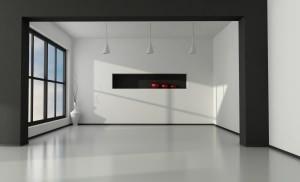 A niche is a recess obtained in the thickness of a wall. It can be the result of changes that occurred within an old house in the course of time, for example when you brick up the opening of old doors with facings of thickness less than that of the wall in which they are inserted. The niches can, however, also be designed and built for aesthetic purposes in new homes. Often this is done to accommodate figurines, objects of art or worship on which we intend to focus.
A niche is a recess obtained in the thickness of a wall. It can be the result of changes that occurred within an old house in the course of time, for example when you brick up the opening of old doors with facings of thickness less than that of the wall in which they are inserted. The niches can, however, also be designed and built for aesthetic purposes in new homes. Often this is done to accommodate figurines, objects of art or worship on which we intend to focus.
When the niche becomes an architectural element that characterizes a room in the house and we intend to stay inside objects that we do not want to pass unnoticed, it becomes appropriate, and also very pleasing to the atmosphere of the room, making a lighting system dedicated to it .
Cove lighting with limited width
The choice of the spotlight does not have to be random. If you want to place in the niche a work of art, it becomes important to verify that the angle of the light beam of the spotlight is large enough to illuminate the subject in all its breadth and, at the same time, the angle of the light beam is not too wide to avoid a homogeneous light in the niche, which generates flattening effect.
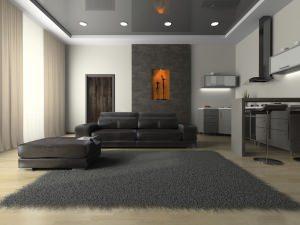 Especially for very high niches, we must also verify that the beam is long enough and can reach the object on which we intend to focus our attention. The risk of spotlights with light beam is too short that it is lit only the upper part of the niche and that the underlying object is not sufficiently enhanced.
Especially for very high niches, we must also verify that the beam is long enough and can reach the object on which we intend to focus our attention. The risk of spotlights with light beam is too short that it is lit only the upper part of the niche and that the underlying object is not sufficiently enhanced.In addition to lighting specially designed to direct our gaze to the niche you can play with colors, for example, by painting the background of the niche with a different color from the rest of the room and maybe that is well in contrast with the color of the object to its inside we want to emphasize.
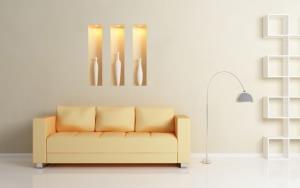 If it is not our intention to paint the niche of a different color from the rest of the room, you can play alternatively with the light color of the spotlight. In this example we see that the color of the light has been designed in conjunction with that of the sofa. I would also like to point out here that the color of light is used to highlight especially white objects within a niche very clear, that objects in the absence of colored light would pass completely unnoticed.
If it is not our intention to paint the niche of a different color from the rest of the room, you can play alternatively with the light color of the spotlight. In this example we see that the color of the light has been designed in conjunction with that of the sofa. I would also like to point out here that the color of light is used to highlight especially white objects within a niche very clear, that objects in the absence of colored light would pass completely unnoticed.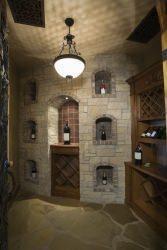 The lighting of a niche with a spotlight from above is also appropriate in most contexts, historical or rustic, as it can be a wine cellar. In this case, the spotlight illuminates a bottle of wine, which would be a bit strange and excessive in a living room, but, if done in the place designated to the aging of wines, it helps to highlight the main function of the room and introduce us in its atmosphere as soon as we access it. The attention is focused on the wine and its aging through lighting.
The lighting of a niche with a spotlight from above is also appropriate in most contexts, historical or rustic, as it can be a wine cellar. In this case, the spotlight illuminates a bottle of wine, which would be a bit strange and excessive in a living room, but, if done in the place designated to the aging of wines, it helps to highlight the main function of the room and introduce us in its atmosphere as soon as we access it. The attention is focused on the wine and its aging through lighting.Lighting of big niches
When instead the niche is very large, the illumination from above with a single spotlight is no longer sufficient, on the contrary, it would penalize both the niche and the objects placed in it. In the case of very large niches there are two solutions, both valid, but that should be studied according to the objects that we want to place in it.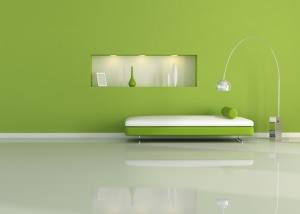 If we want to have more items in the alcove next to each other, the lighting spotlights from top to bottom still does the job. In this circumstance we will design a series of more spotlights at a constant distance from each other. We must pay close attention to find the right balance between the number of spotlights and the width of their light beams in order to make the most of the niche.
If we want to have more items in the alcove next to each other, the lighting spotlights from top to bottom still does the job. In this circumstance we will design a series of more spotlights at a constant distance from each other. We must pay close attention to find the right balance between the number of spotlights and the width of their light beams in order to make the most of the niche.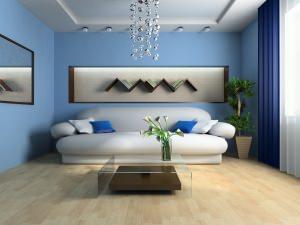 If within the niche we plan to place one very large object, lighting spotlights a design solution may be a bit weak. We can then organize a more homogeneous illumination over the entire width of the niche: a sort of waterfall of light coming from above. Sometimes this type of lighting is done with equipment that does not meet all the aesthetic point of view, but you can still find a solution hiding the light source and build it in the wall so you can see the light but not its source.
If within the niche we plan to place one very large object, lighting spotlights a design solution may be a bit weak. We can then organize a more homogeneous illumination over the entire width of the niche: a sort of waterfall of light coming from above. Sometimes this type of lighting is done with equipment that does not meet all the aesthetic point of view, but you can still find a solution hiding the light source and build it in the wall so you can see the light but not its source.
Niche lighting from below
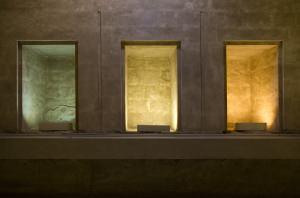 In addition tothe lighting in niches from above, which is the most common solution, let me finally mention the possibility of having the lighting from below. It can be done with spotlights placed on the horizontal bottom of the niche, or with projectors, if you wish, with colored light. As you can see, the final effect is very dramatic, it is preferable to use this method sparingly and outdoor, in places such as gardens. Among other things I would like to emphasize that the illumination from below requires very deep niches. There is a risk of placing the object to be illuminated on the device just illuminating, therefore blocking the beam and obtaining a totally inappropriate effect.
In addition tothe lighting in niches from above, which is the most common solution, let me finally mention the possibility of having the lighting from below. It can be done with spotlights placed on the horizontal bottom of the niche, or with projectors, if you wish, with colored light. As you can see, the final effect is very dramatic, it is preferable to use this method sparingly and outdoor, in places such as gardens. Among other things I would like to emphasize that the illumination from below requires very deep niches. There is a risk of placing the object to be illuminated on the device just illuminating, therefore blocking the beam and obtaining a totally inappropriate effect.
80835 REGISTERED USERS










